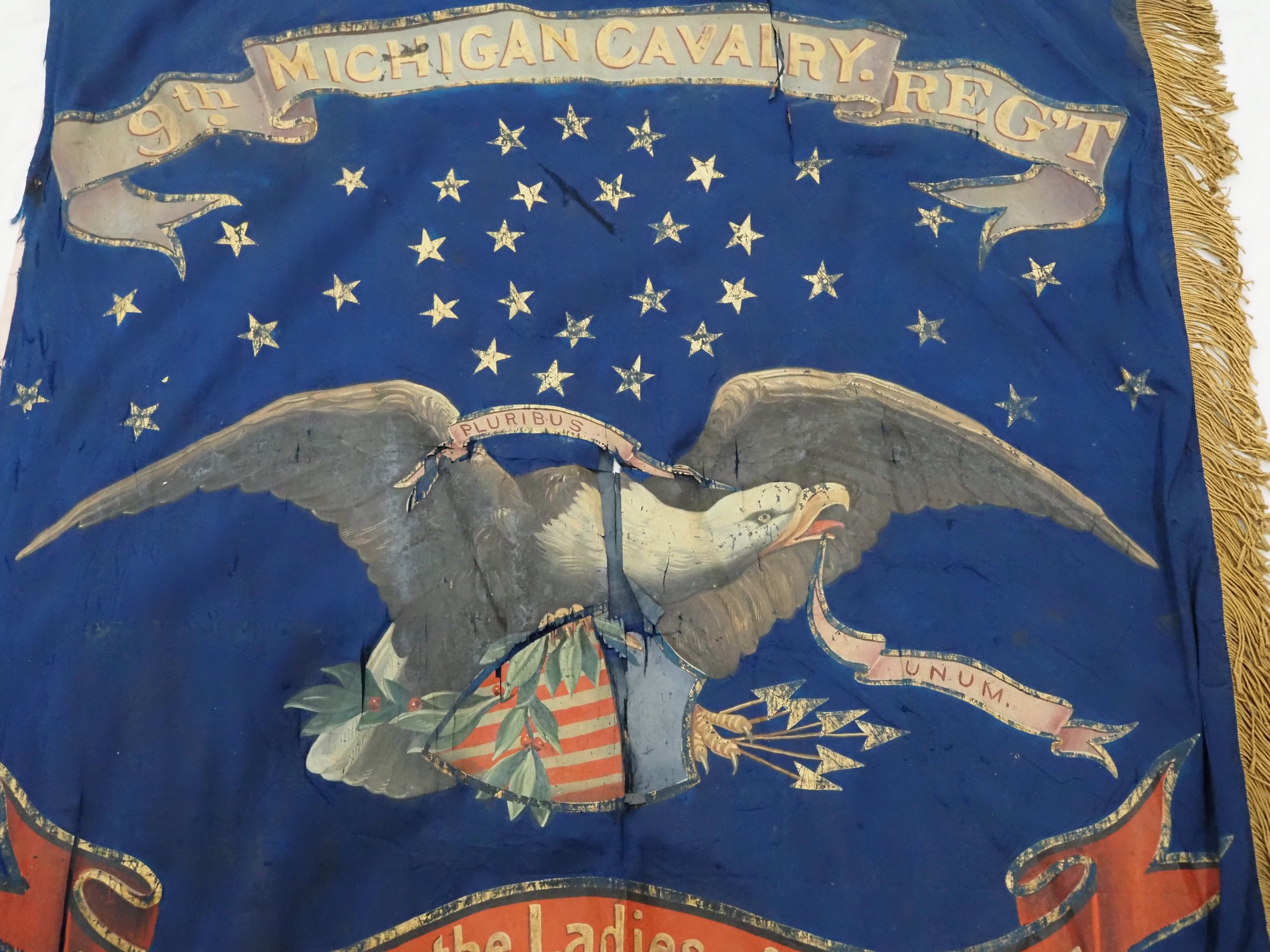



9th Michigan Volunteer Cavalry
SC-124-90: Two silk flags, one regimental and one national stacked on the same staff.
Flag 1: Silk regimental. Dimensions: ?” x ?” ▪ Fringe
Flag 2: Silk national. Dimensions: ?” x ?”
Description:
Flag 1 is a silk regimental flag made of two layers of silk painted on each side with a different design. The obverse is painted with a stylized version of the coat-of-arms of the State of Michigan. The reverse is painted with the federal eagle. There are some splits in the silk, but the flag is mostly intact. A gold-colored fringe is attached to the top, bottom, and fly edge.
Flag 2 is a swallowtail silk flag and is very fragmentary. Only a small amount of blue silk and the remnants of three painted gold stars remain in the canton. A large amount of the fly edge is also missing. The hoist edge was fashioned into a sleeve for attachment to the staff.
The staff, which measures 90” by 1”, is topped by a spade-shaped finial. The staffs of flags returned to the state at the 1866 Detroit ceremony marking the end of the war all bear identical brass plaques. The brass plaque reads in Spencerian script “9th Mich. Cavalry”.
Adoption:
May 13, 2006 - Descendents of George F. Heusted




9th Michigan Volunteer Cavalry
SC-129-90: Silk regimental ▪ Dimensions: 33” x 28” ▪ Fringe
Description:
This silk regimental flag is painted with the federal eagle in the center and 34 gold painted stars above. Above the stars is painted a ribbon with the regimental designation. It reads “9th MICHIGAN CAVALRY. REG’T”. A red painted ribbon on the bottom of the flag reads “Presented by the Ladies of ColdWater.” A gold-colored fringe is attached to the top, bottom, and fly edge of the flag. There are a few splits in the fabric particularly in the painted area and near the hoist edge. A reinforcing tape is attached to the hoist end, and it appears that the flag was nailed to the staff through the tape.
The staff, which measures 88.75” by 1.25”, is carved into a spear-shaped finial at the top.
Adoption:
October 27, 1995 - Descendents of Albert R. Nash
September 14, 2024 - Karla Christenson
